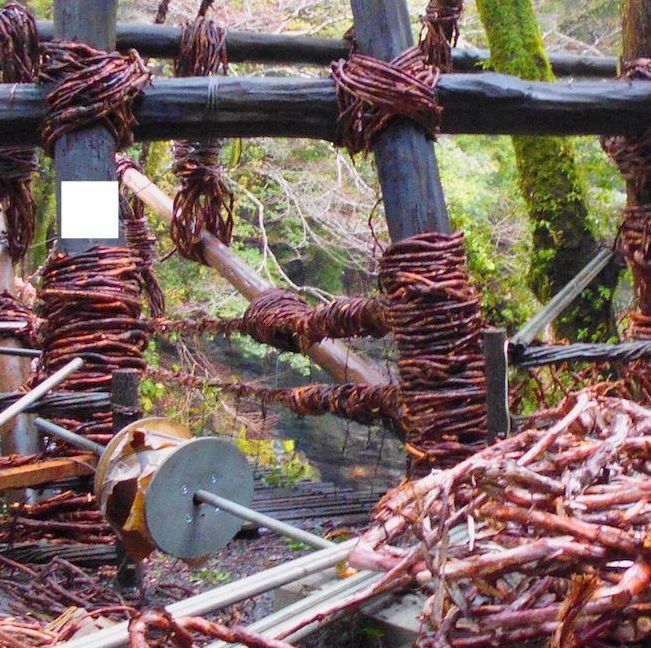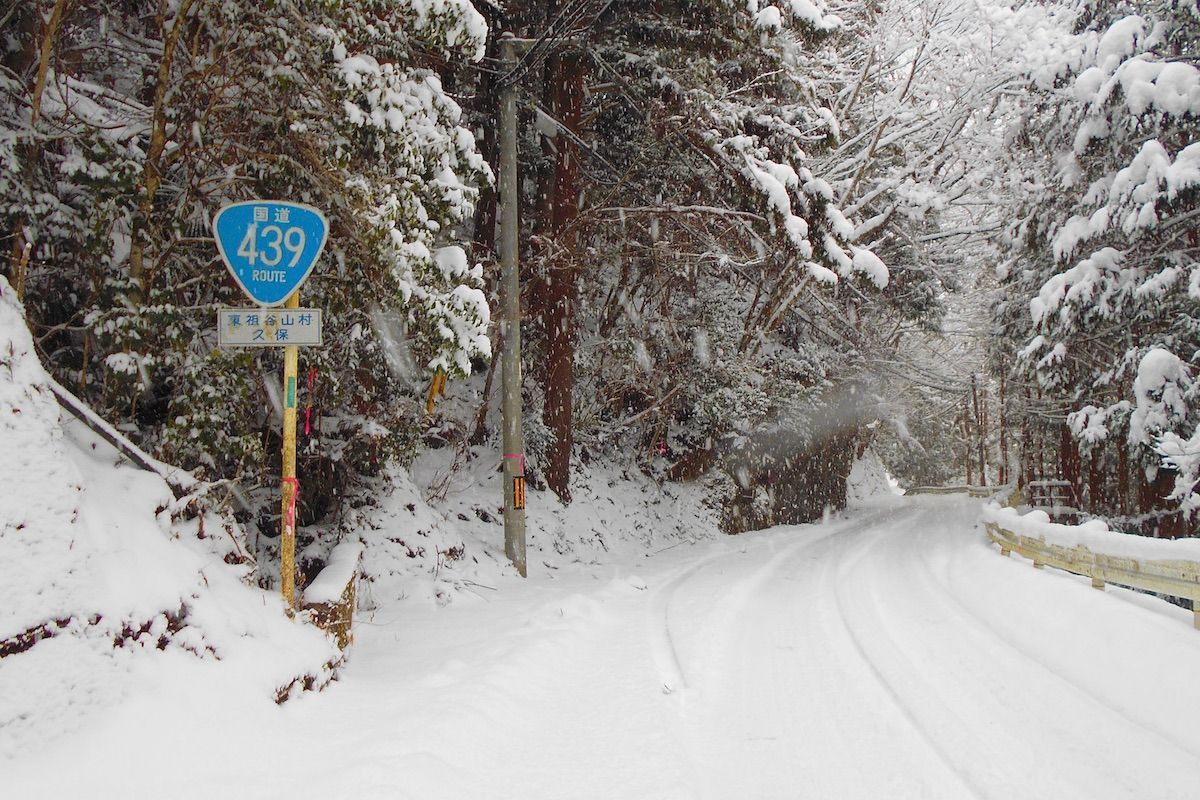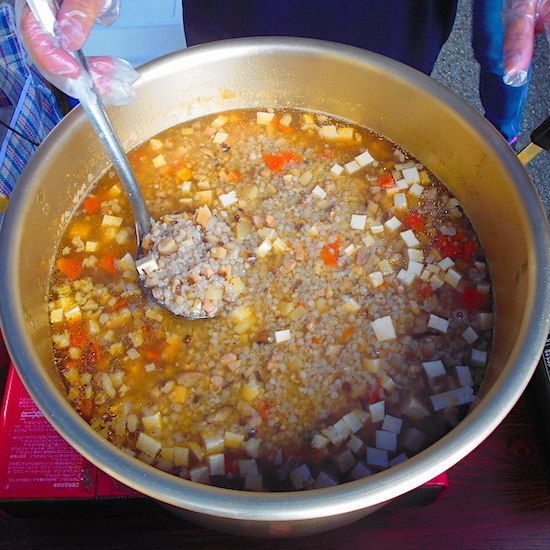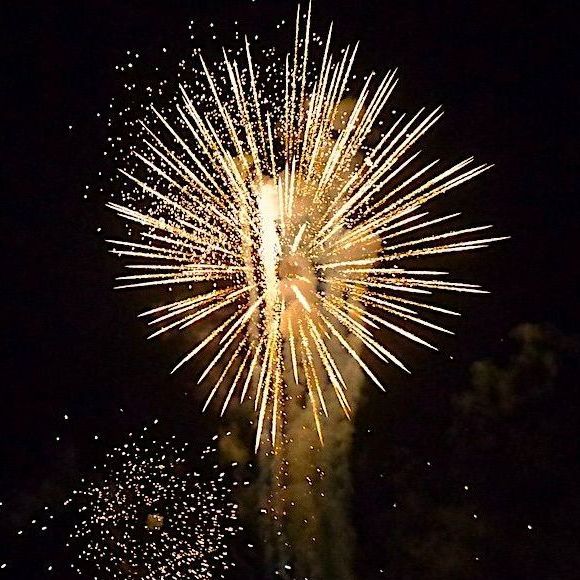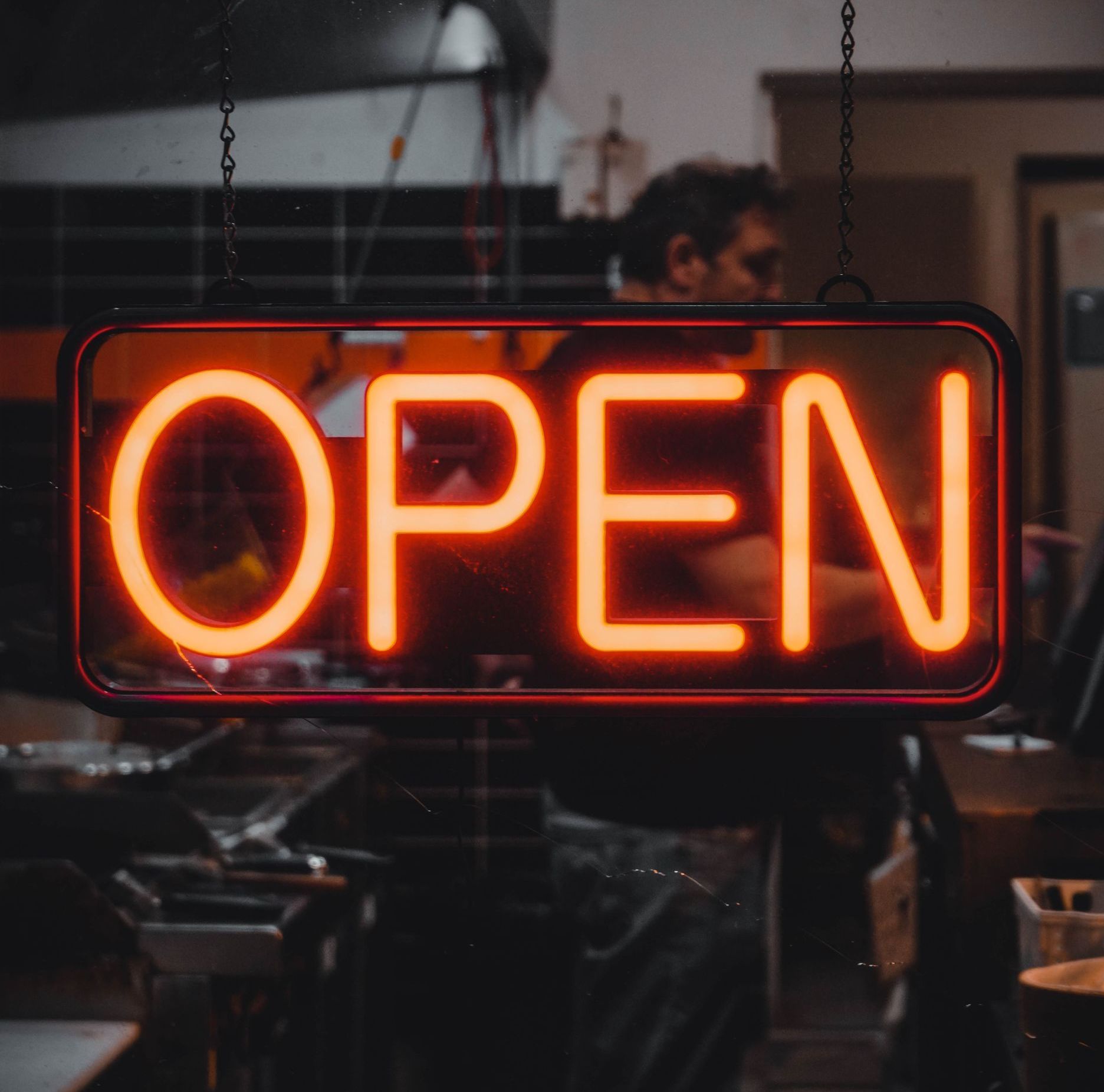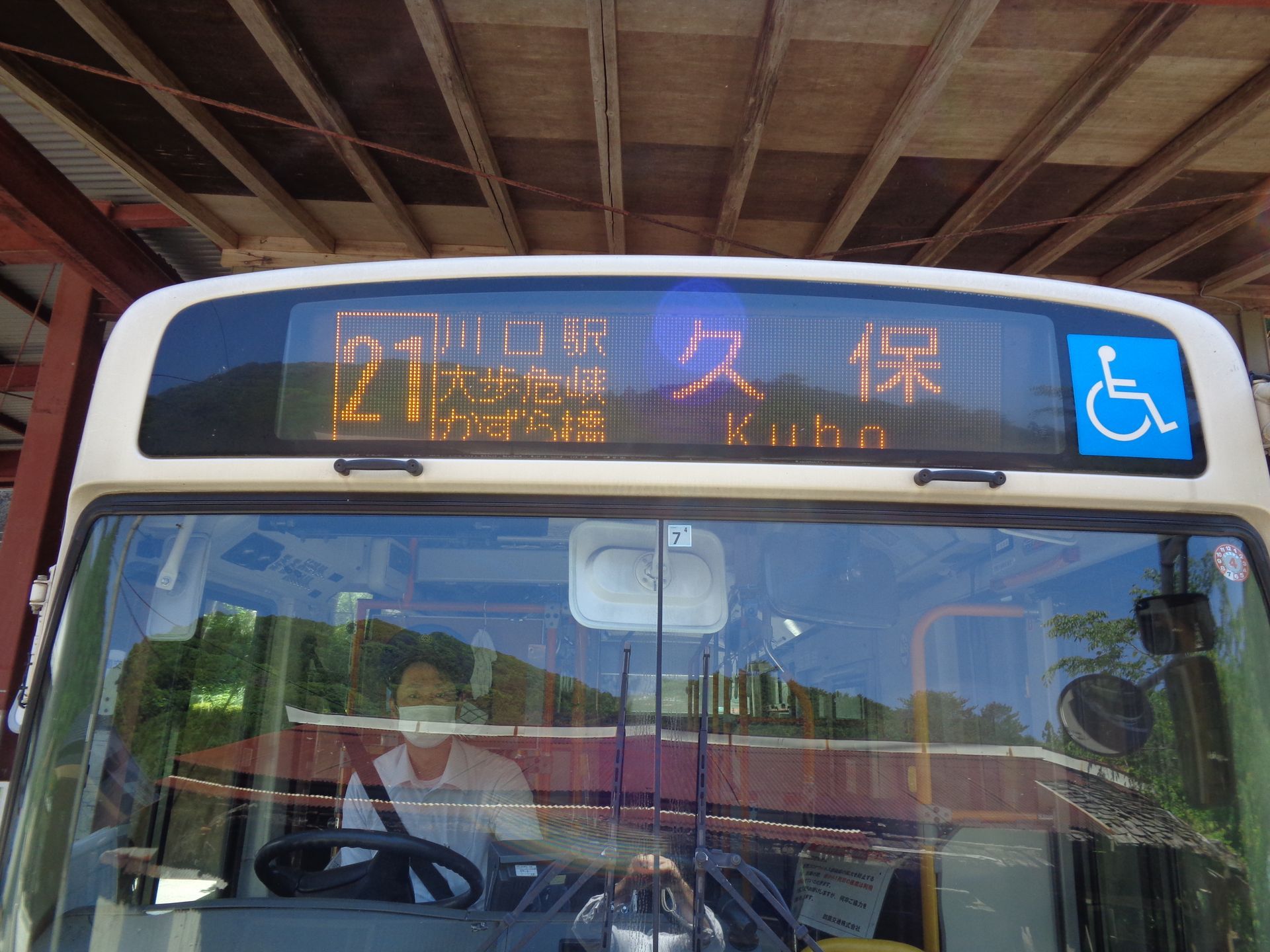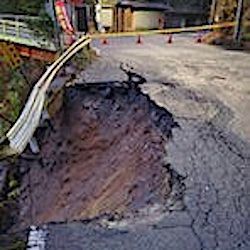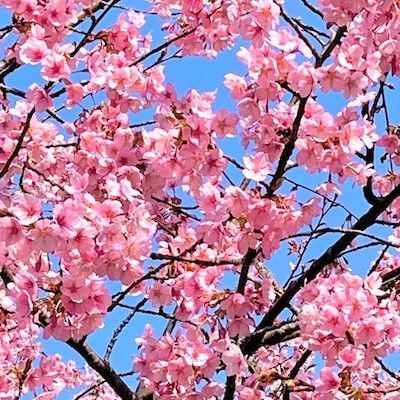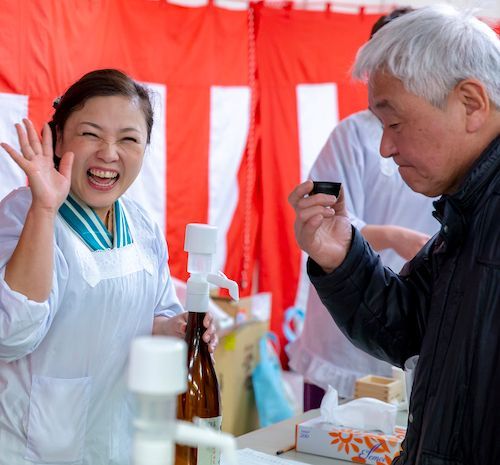"Chasing the Mountain" - On the Hunt in the Rugged Iya Valley
Perseverance, power, and skill are key for hunting wild boar and deer in Miyoshi’s mountainous Iya Valley
“First are legs. Second are dogs. And third is the gun.” I was at the deep Iya Valley home of old-school hunter Eiji Domai and he was explaining the traditional methods “oi-yama”, which is a somewhat peculiar sounding term in Japanese used by outdoorsmen for “hunting”, yet is more directly translated as “chasing the mountain” .
The walls of Domai-san’s den were stacked high with wood and a mid-winter fire was ablaze in his large stove. All about the place were the markings of his craft: a slew of knives, a variety of antlers and taxidermy, and a hefty winch bolted into the ceiling that he uses to suspend his catch for butchering.
“When on the hunt, having the best rifle in the world means nothing if you don’t have good legs for the chase and trained dogs that know what to do,”
according to Domai-san.
“That’s why the gun is only third in importance.”
Indeed, the hunt for wild boar and deer in the steep mountains of central Shikoku is a task for neither the meek nor the mild.
Man vs Wild
Winter is the season for wild boar, when hunters like Domai-san take their packs of 4 or 5 dogs into the forest to scout the snow for fresh boar prints. Years of practice have taught him how to judge the prints, from the size of the animal to how long before it was there.
Once good prints are found, the hounds are released and the chase begins. Often covering well over a dozen kilometers and a full day of running, if the dogs are successful they are trained to encircle the boar and bark incessantly to keep it from escaping. When the hunter finally catches up, he finishes the job with his gun, and then begins the arduous task of hauling out the animal.
“Once we got a 150kg boar at the bottom of the valley,” Domai-san explained. “It took me and five other guys 9 hours to pull it up to the road!”
But times are changing and hunting has become much less common today. On the one hand this can be good for someone like Domai-san, who nowadays usually hunts alone, since there are a lot more animals around.
“As a kid, I used to catch rabbits and mountain pheasants on my own, but wild boar and deer were pretty scarce. There were still lots of hunters around as I grew older and began hunting for real, but if we ever caught a boar we’d have to split the meat between everyone in the group.” He laughed as he detailed what this sharing meant as a younger member. “If we got a 50 or 60 kilo boar, there were so many guys involved I’d be lucky if I could get just a handful of meat!”
The traditions of hunting in Iya go back centuries, with most hunters here being engaged in the activity since they were children.
Further up the Iya Valley I met with Takaaki Nakaoka and his hunting partner Noboru Hiura at their rustic hunter’s hut. Nakaoka-san is the head of the Iya Valley Hunter’s Association, which currently has about 25 members, though only a few members still use dogs like Domai-san.
“When I was a child 50 or 60 years ago, there were hundreds of hunters in Iya and we used to go out with our dads to learn how to hunt,” explained Nakaoka-san. “Every man I knew had a gun and hunting was a way of life. And in my dad’s generation, boar was so rare that they would sell the meat outside the valley for extra income since it was so valuable.”
“And getting a hunting license back then was pretty simple. You could just go over to the local school and sign up. But today it’s a lot more strict, and it requires special training and tests. Now, very few people have a gun in Iya anymore.”
But as the population of Iya has been decreasing and regulations are increasing, it doesn’t only mean fewer hunters are still active. As it goes, boar are much more prevalent and the deer are multiplying at an uncontrollable rate.
Maintaining the Balance of Life
Until about 30 years ago only a limited number of male deer were allowed to be hunted per year in Iya being that they were so uncommon. However, for the past few decades the number of deer has been increasing substantially, to the point that the ever-growing deer population is now harming the ecosystem.
Today its common to spot deer in the forests of Iya, and Nakaoka-san talked of how not only are the deer invading the local farm fields and destroying unprotected crops, but the deer have also developed a taste for fresh tree bark, which they chew off the base of old-growth trees and this leads to the death of the tree. For sure, on the hiking trails throughout the Iya Valley its easy to find bark-less trees within large swaths of withering forest.
Since the nimble deer are usually too quick for dogs, Nakaoka-san and Hiura-san prefer hunting deer as a pair, and they go out in the early mornings on the remote forestry roads with their outfitted trucks. When they spot a deer they pull over and one man will begin the chase while the other man goes further ahead to quietly encircle the animal. But even with the use of their trucks, it is neither a simple or guaranteed task.
They also spoke of how the government has realized a need for the hunters to maintain a natural balance, and therefore support has been established to attract more interest. Nakaoka-san and Hiura-san also wish hunting would become revived with the younger generations to keep the traditions alive as well as to help tame the herds, and perhaps it will since there is certainly a growing interest across Japan in eating wild-game meat.
Iya Gibier: The Wild Taste of Shikoku’s Mountains
Known throughout Japan as “gibier” (pronounced “ji-bi-e” in Japanese), this general Japanese word for any wild-game meat is derived from the French language word of the same meaning, and in the past few years “Iya Gibier” has developed an increasing reputation among carnivore enthusiasts seeking authentic tastes.
In the center of the valley within a now-defunct kindergarten building is the Iya Hunter’s Butchery. Established in 2014 by the Iya Valley Hunter’s Association and the Miyoshi City Government, the orderly place is operated by master butcher Keishiro Takahashi. Literally a local jack-of-all-trades and ever cheerful, Takahashi-san has been a cook for much of his life and studied in a variety of places for how to butcher wild game before taking the helm of the butchery.
In an effort to support local hunters, the butchery was created as a place for them to sell their fresh catches as they help control the increasing animal populations while also making available to everyone the wonderful tastes of Iya’s wild game. Takahashi-san and his small crew of staff hygienically process the boar and deer meat they receive into a variety of packaged Iya Gibier cuts that are sold to hotels and restaurants across Japan, and also available for anyone to purchase either in person or online.
And in this meticulously clean establishment, maintaining quality is very important. “The hardest part is getting the meat in fresh,” explained Takahashi-san. “We have a rule that we only take animals within one hour of being killed.” In fact, the place is so well kept that it was the country’s second location to ever receive Japan’s prestigious “Domestic Gibier Certification” for meatpacking facilities.
Always looking for new ways to offer his craft, steaks and roasts are produced along with ham, jerky, and minced meat. One of his other specialties is sausage, which Takahashi-san had been making for years previously with more common types of meat, well before getting involved with wild-game.
A Hearty Back-Country Flavor
Back over at Domai-san’s mountain-side man-cave, the barbecue was flaming with meat. A half dozen of Takahashi-san’s thick gibier sausages sizzled on the grill as they filled the air with a tempting aroma which made Domai-san’s dogs yap with desire in the background. His slightly more docile dog Maru sat beside us attentively, hoping in vain for a handout.
As he sat by the grill and recounted more grizzled stories of “chasing the mountain”, Domai-san bit approvingly into one of the boar sausages. “This tastes like a nice salami. More people should try it.”
And in case you also want to experience this taste of the chase, there are several places throughout Miyoshi which have Iya Gibier on offer.
- Up at Kouya MAP traditional guesthouse deep in Oku-Iya, guests should be sure to reserve their robust wild boar hot-pot, which you can also help prepare around their irori fireplace with the welcoming owners.
- At the Oku-Iya Hotel & Restaurant MAP rich deer curry and ample multi-item deer sets are served daily for lunch, and overnight guests can also order special gibier meals.
- Over at the scenic Hotel Iya Onsen MAP their restaurant “HANA”, special prepared lunches feature some of Takahashi-san’s premium deer cuts.
- In Oboke at the cafe & jibie MAP you can get some awesome wild game burgers, sausages, and more using meat hunted in the Iya Valley and supplied by Takahashi-san.
- While up in Ikeda at Heso Salon MAP a range of Iya Gibier dishes are available for lunch and an even wider variety is on the menu for dinner, which are great with wine or their selection of craft beers.
- And if looking to cook for yourself, you can contact the Oku-Iya Hunter’s Butchery website directly to order from the array of Takahashi’s offerings (domestic Japan shipping only) or even stop by MAP when in the area to get some for your BBQ.
So when visiting Miyoshi, be sure to “Chase the Mountain” with Iya Gibier. Bon appetit !!

